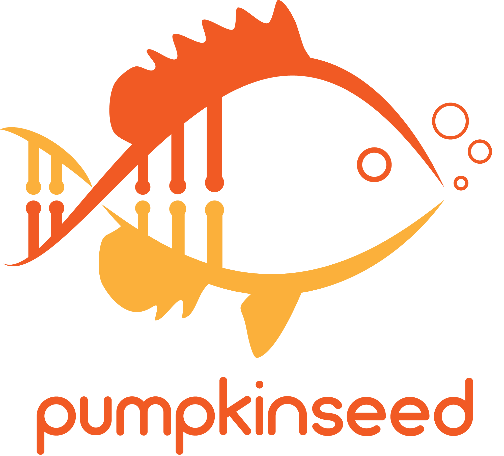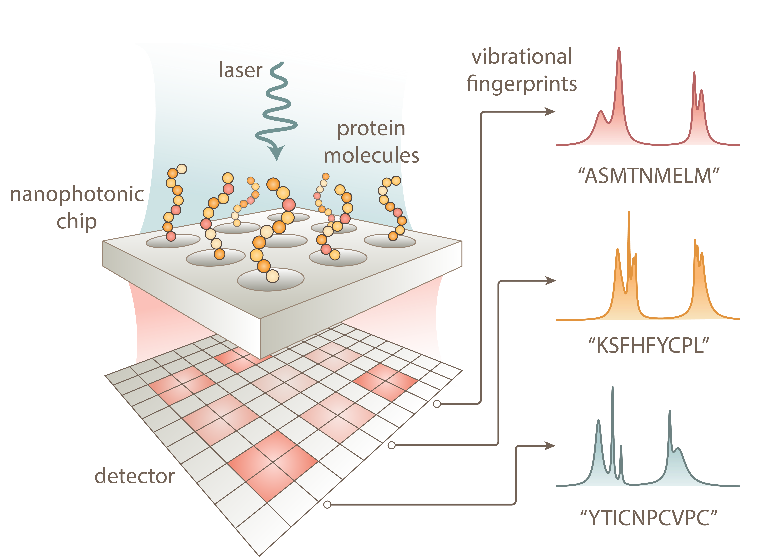 In the rapidly evolving field of proteomics, Pumpkinseed is making waves with its novel approach to protein sequencing. By leveraging advanced silicon photonic devices, this innovative biotechnology startup is working towards providing light-speed reads of the proteome, potentially revolutionizing our understanding of cellular processes and opening new avenues for therapeutic development. Pumpkinseed’s ambitious goal is to develop an optics-based approach to protein sequencing that can scale to the full complexity of the complete proteome. Unlike traditional methods that rely on complex biochemical probes, Pumpkinseed’s technology utilizes silicon photonic devices to sensitively extract protein molecules' vibrational “fingerprint” without needing any biochemical probes or labels.
In the rapidly evolving field of proteomics, Pumpkinseed is making waves with its novel approach to protein sequencing. By leveraging advanced silicon photonic devices, this innovative biotechnology startup is working towards providing light-speed reads of the proteome, potentially revolutionizing our understanding of cellular processes and opening new avenues for therapeutic development. Pumpkinseed’s ambitious goal is to develop an optics-based approach to protein sequencing that can scale to the full complexity of the complete proteome. Unlike traditional methods that rely on complex biochemical probes, Pumpkinseed’s technology utilizes silicon photonic devices to sensitively extract protein molecules' vibrational “fingerprint” without needing any biochemical probes or labels.

A schematic illustration of Pumpkinseed’s advanced protein sequencing technology.
“Proteins are critical to a wide array of cellular processes - from cell signaling to immune responses, nutrient transport, growth, and metabolic regulation,” explains Dr. Jack Hu, co-founder of Pumpkinseed. “Our improved understanding of the presence and sequence of proteins could inform new disease pathways and lead to new therapeutics.”
At the heart of Pumpkinseed’s innovative approach lies the design and optimization of nanophotonic sensor chips. This is where Tidy3D plays a crucial role. The Pumpkinseed team utilizes Tidy3D to enhance their sensor designs, enabling more efficient extraction of optical signals from protein molecules of interest and allowing for the physical miniaturization of devices to pack millions of sensors onto a single chip.
“The primary advantage of Tidy3D is the incredible speed of the simulations,” Dr. Hu emphasizes. In the fast-paced environment of a biotechnology startup, where projects across multiple disciplines need to converge simultaneously, Tidy3D’s speed is invaluable. It allows the team to rapidly iterate on chip designs, improving device performance while saving time and costs on actual semiconductor manufacturing. Moreover, Tidy3D’s Python API has proven to be a game-changer for Pumpkinseed’s multidisciplinary team. It enables them to quickly design simulation experiments and analyze and visualize results. This has led to a significant speed up of communication of results and findings across the multi-disciplinary team and enabled improved R&D progress across the entire team.
The impact of Tidy3D on Pumpkinseed’s work extends beyond just simulation speed. By facilitating rapid design iterations and enabling efficient communication of results, Tidy3D has become an integral part of Pumpkinseed’s R&D process. It has allowed the team to bridge the gap between nanophotonic design, optical and fluidic instrumentation, and chemistry – all crucial elements in their innovative approach to protein sequencing. The partnership between Pumpkinseed and Tidy3D exemplifies how advanced simulation tools can drive innovation in biotechnology, potentially leading to breakthroughs that could transform our understanding of cellular processes and pave the way for new therapeutic approaches.